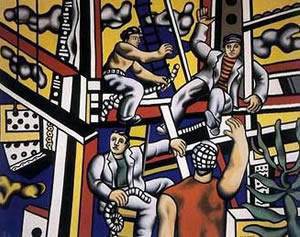
Edward Hopper (1882 – 1967)
Nighthawks , 1942
oil on canvas
The Art Institute of Chicago, Friends of American Art Collection
Washington’s First Major Survey of Edward Hopper’s Career and “Nighthawks” First Visit to DC
On View at the National Gallery of Art, September 16, 2007-January 21, 2008
]]>
Washington, DC – This is the first time in more than 25 years that a comprehensive exhibition Edward Hopper’s work has been seen in American museums outside New York and is the most complete survey of his career ever presented in Washington. The exhibition focuses on the period of the artist’s great achievements-from about 1925 to mid century-when he produced such iconic paintings as Automat (1927), Drug Store (1927), Early Sunday Morning (1930), New York Movie (1939), and Nighthawks (1942).
Edward Hopper is organized by the Museum of Fine Arts, Boston, where it debuted May 6 through August 19, 2007; National Gallery of Art, Washington, on view September 16, 2007 through January 21, 2008; and The Art Institute of Chicago, where it will be seen February 16 through May 11, 2008.
“The National Gallery is pleased to present this new exploration of the career of Edward Hopper, an artist who produced some of the outstanding masterpieces of modern American art,” said Earl A. Powell III, director, National Gallery of Art. “We are pleased to join the Museum of Fine Arts and the Art Institute of Chicago in investigating how his images were seen in his own time. We welcome the sponsorship of Booz Allen Hamilton, who helped bring this important show to our nation’s capital.”
Exhibition Organization and Sponsor
The exhibition at the National Gallery of Art in Washington is made possible by a generous grant from the global consulting firm Booz Allen Hamilton Inc.
“Booz Allen is honored to sponsor this major exhibition at the National Gallery of Art of one of America’s greatest artists. Edward Hopper’s genius was his ability to make ordinary and familiar scenes into extraordinary and memorable ones. This exhibition will delight and inspire people of all ages in the Washington area, and we are proud to be able to help make possible such a special exhibition where our firm is headquartered,” said Dr. Ralph Shrader, chairman and chief executive officer of the global consulting firm Booz Allen Hamilton.
The Artist and the Exhibition
The classic works of Edward Hopper (1882-1967) capture the realities of urban and rural American life with a poignancy and beauty that have placed them among the most enduring and popular images of the 20th century. This exhibition of 48 oil paintings, 34 watercolors, 12 prints, and two ledger books, arranged chronologically and thematically, reveals Hopper as a creator of compelling images who produced remarkably subtle and painterly effects in both oil and watercolor. It also examines how his images were seen by his contemporaries in the middle decades of the century.
From the late 1920s, Hopper was recognized as one of the most profound American artists, praised for his mastery at painting light, for his direct, eloquent realism, and for his unique sensitivity to modern American life. He excelled as a painter in oils, as a watercolorist, and as a printmaker, and this exhibition presents his greatest work in all three media. The assembled art includes some of Hopper’s best-loved images as well as seldom seen works of extraordinary quality and power.
A group of paintings and prints from the 1910s introduces his signature subjects, and reveals his beginnings as an artist influenced by both the American Ashcan school and a fin-de-siècle sensibility to which he was exposed during student years in Paris. The core of the exhibition is dedicated to the mature, highly original images for which he is justly famous: majestic Maine lighthouses; Manhattan apartments, restaurants, and theaters; and the old-fashioned houses of Gloucester and Cape Cod. Hopper’s career spanned six decades, and in his epic late paintings, created during the ascendancy of abstract expressionism, he remained a staunch realist, his style marked by increasing simplicity and austerity.
Follow us on:


